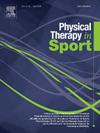慢性踝关节不稳定患者的髋关节肌力:一项系统回顾和荟萃分析
IF 2.2
3区 医学
Q1 REHABILITATION
引用次数: 0
摘要
目的探讨慢性踝关节不稳定(CAI)患者与健康人相比是否表现出髋关节肌力不足。方法根据PRISMA指南对5个数据库进行综合检索,检索时间自成立至2025年5月。采用改进的Downs和Black检查表对纳入的研究进行质量评估,并采用随机效应模型进行meta分析,结果报告为标准化平均差异(SMD)。结果共纳入10项研究,共548人,其中CAI 271人,健康对照277人。CAI患者表现出显著减少髋外展(SMD: 0.56, P <;0.001)、伸展(SMD: 0.62, P = 0.003)和外旋强度(SMD: 0.59, P = 0.005)。60°/s的等速运动强度无显著差异。敏感性分析显示髋关节外旋强度的结果不稳定,而其他结果保持稳定。结论与健康人群相比,CAI患者在髋外展和髋外展力量方面存在明显缺陷。髋关节肌力评估应纳入CAI患者的常规检查。本文章由计算机程序翻译,如有差异,请以英文原文为准。
Hip muscle strength in patients with chronic ankle instability: A systematic review and meta-analysis
Objective
To determine whether chronic ankle instability (CAI) individuals exhibit hip muscle strength deficits compared to healthy people.
Methods
A comprehensive search of five databases was conducted from inception to May 2025 according to PRISMA guidelines. Quality assessment of included studies was performed using the modified Downs and Black checklist, and meta-analysis was conducted using random-effects models with results reported as standardized mean differences (SMD).
Results
Ten studies involving 548 participants (271 CAI, 277 healthy controls) were included. Individuals with CAI demonstrated significantly decreased isometric hip abduction (SMD: 0.56, P < 0.001), extension (SMD: 0.62, P = 0.003), and external rotation strength (SMD: 0.59, P = 0.005) compared to controls. No significant differences were found in isokinetic strength at 60°/s. Sensitivity analysis showed unstable results for hip external rotation strength, while other outcomes remained stable.
Conclusion
Individuals with CAI demonstrated significant deficits in isometric hip abduction and extension strength compared to healthy people. Hip muscle strength assessment should be incorporated into routine examination of CAI individuals.
求助全文
通过发布文献求助,成功后即可免费获取论文全文。
去求助
来源期刊

Physical Therapy in Sport
医学-康复医学
CiteScore
4.50
自引率
8.30%
发文量
125
审稿时长
39 days
期刊介绍:
Physical Therapy in Sport is an international peer-reviewed journal that provides a forum for the publication of research and clinical practice material relevant to the healthcare professions involved in sports and exercise medicine, and rehabilitation. The journal publishes material that is indispensable for day-to-day practice and continuing professional development. Physical Therapy in Sport covers topics dealing with the diagnosis, treatment, and prevention of injuries, as well as more general areas of sports and exercise medicine and related sports science.
The journal publishes original research, case studies, reviews, masterclasses, papers on clinical approaches, and book reviews, as well as occasional reports from conferences. Papers are double-blind peer-reviewed by our international advisory board and other international experts, and submissions from a broad range of disciplines are actively encouraged.
 求助内容:
求助内容: 应助结果提醒方式:
应助结果提醒方式:


